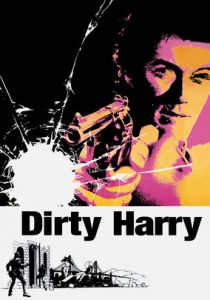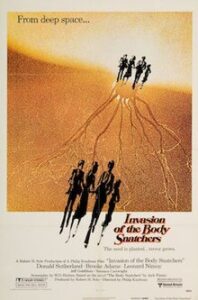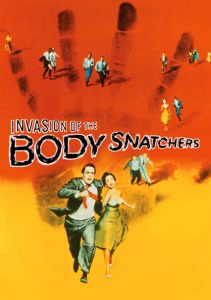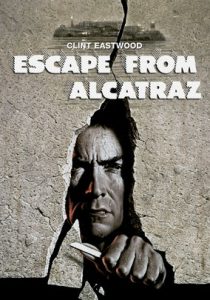Dirty Harry-1971
Director Don Siegel
Starring Clint Eastwood, Harry Guardino
Top 250 Films #42
Scott’s Review #443
Reviewed July 4, 2016
Grade: A
Dirty Harry (1971) is a classic crime drama that became a signature role for Clint Eastwood as the title character, a role he has played four more times.
Dirty Harry set the tone for the plethora of crime thrillers and police action films that filled theaters throughout the 1970s and 1980s. This film still holds up very well and is a masterpiece of the cat-and-mouse/detective genre.
Quiet and controlled, but filled with anger below the surface (we learn a drunk driver killed his wife), Harry Callahan is a tough cop in San Francisco who has seen it all. He is a red-blooded American good guy, though he is brooding and has a mind of his own, oftentimes disagreeing with his superiors and their rules.
He epitomizes good versus evil.
A vicious killer named Scorpio (based on the real-life Zodiac killer) is on the loose, having killed two people already. His motives are unclear, but that is rather unimportant. What is important is that he threatens to kill one person per day unless his demands of $100,000 are met.
Harry is immediately assigned to the case despite his reputation for being difficult and violent. This leads to a cat-and-mouse game between Harry and Scorpio in Harry’s pursuit of the criminal.
Scorpio is played by Andy Robinson, who is a fantastic villain- perhaps one of the most frightening in film history. His dirty blonde locks, yet angelic face, combined with maniacal facial expressions make his portrayal quite frightening.
He is a sniper so he is continually perched on rooftops seeking his next victim. As he watches a couple eating ice cream in the park or a woman swimming in a rooftop pool, we feel a sense of voyeurism and dread.
His disturbing sense of humor and sadistic personality make him quite scary.
The film succeeds in large part because of its grit and violence. And it is a very masculine film. Harry is a take-no-prisoners kind of guy and he is hell-bent on stopping Scorpio from killing- no matter what.
In a very effective scene, Harry chases Scorpio to a vast football field and uses torture to elicit a confession from Scorpio. It is a bloody and intense scene, but quite necessary to who Harry is.
Of course, this tactic backfires as Scorpio is released from the hospital and set free. This leads to a further feud between the two men.
A bonus of Dirty Harry, and one aspect that gives so much authenticity, is the on-location setting of San Francisco. From the Golden Gate bridge to the illustrious mountains outside of the city and the Pacific Ocean, these elements give a dash of realism to an already gritty film. Chinatown and Dolores Park are also featured.
Highlighting all of this is a sequence where Scorpio forces Harry to go from locale to locale on foot in part of a wicked game to save a victim.
Harry’s famous lines as he points his gun at the perpetrators and mocks them by asking them if five or six bullets in his gun are now legendary as is his “Do I feel lucky? Well, do you, punk?”
On the surface a bit silly and gimmicky, these catchphrases somehow still work.
The school bus finale as Harry and Scorpio once again square off is great. As Scorpio hijacks a bus filled with grammar school students, he tricks the students, unaware of his intentions, by engaging them in children’s song sing-alongs as the harried bus driver drives out of the city.
When one child catches wind of the situation, Scorpio turns nasty, scaring the children into a frenzy.
Dirty Harry (1971) is a classic cop film that I never tire of watching. For the genre, it is as good as it gets and holds up well. After all of these years, it is tough to disassociate Clint Eastwood from the role of “Dirty Harry”.



